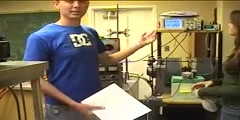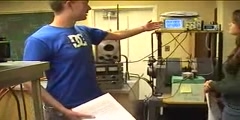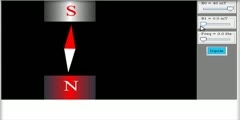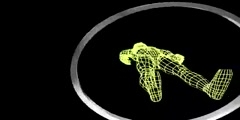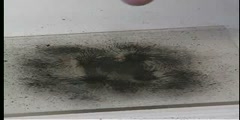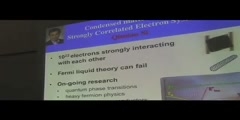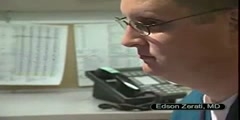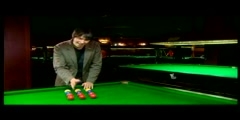Lec 30 - Physics 111: Nuclear Magnetic Resonance Part-2 Pulsed NMR
Physics 111: Nuclear Magnetic Resonance Part-2 Pulsed NMR Physics 111 Advanced Laboratory. Larry Wald This video part 2 accompanies the Nuclear Magnetic Resonance Experiment, providing students with an introduction to the theory, apparatus, and procedures. In the NMR experiment, nuclear dipoles (the samples) are subjected to a static magnetic field of about 4000 gauss as well as a time-varying radio-frequency magnetic field perpendicular to the static field. The static field causes Zeeman-effect splitting between sub-states, and the radio frequency field is tuned to the Larmor frequency so that it induces transitions between the sub-states. The resonance condition is observed using the Bloch two-coil induction technique. You will observe proton and fluorine nuclei. You will learn techniques of lock-in detection and signal averaging. A second part of this experiment uses a pulsed radiofrequency field rather than a continuous-wave (CW) field. Signals are detected immediately after the pulsed excitation stops. The observable effects are comparable to the free vibration or ringing of a resonant cavity on an atomic scale. This is the basis of Magnetic Resonance Imaging (MRI) in the medical field today. http://advancedlab.org
Video is embedded from external source so embedding is not available.
Video is embedded from external source so download is not available.
Channels: Physics (General)
Tags: Physics 111: Nuclear Magnetic Resonance Part-2 Pulsed NMR
Uploaded by: berkeleyphy111 ( Send Message ) on 19-09-2012.
Duration: 21m 38s
Here is the next lecture for this course
Lec 29 - Physics 111: Nuclear Magnetic Re ...
18:22 | 5165 viewsNuclear Magnetic Resonance
04:15 | 5370 viewsNuclear Magnetic Resonance NMR
08:43 | 9535 viewsNuclear Magnetic Resonance Video
04:15 | 5209 viewsMagnetic resonance as used in NMR and MRI
05:09 | 5367 viewsLec 2 - Physics 111: Atomic Physics (ATM) ...
32:01 | 5349 viewsLec 24 - Physics 111: Non-Linear Spectros ...
01:01:25 | 4470 viewsLec 25 - Physics 111: Non-Linear Spectros ...
34:46 | 3875 viewsNuclear magnetic resonance NMR in Spanish
00:35 | 4491 viewsPhysics Lab Demo 6: Magnetic Field
02:26 | 14590 viewsRice U Physics and Astronomy: Condensed M ...
07:21 | 6305 viewsMagnetic Resonance Imaging
06:41 | 6089 viewsLec 1 - Physics 111: Atomic Physics (ATM) ...
20:54 | 4776 viewsLec 18 - Physics 111: Energy Levels Lectu ...
35:01 | 3765 viewsThe Standard Model of Particle Physics (P ...
03:07 | 11861 viewsNo content is added to this lecture.
This video is a part of a lecture series from of berkeley


